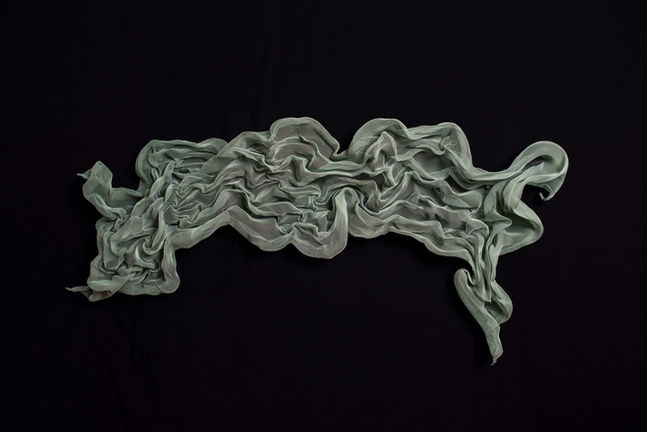Phytoplankton Blooming
February 2021
The Bakery
Upcycled aluminium mesh and enamel spray paint
Phytoplankton are photosynthetic organisms that live suspended just beneath the water’s surface. They are so important for our very existence. As the oceans warm phytoplankton are changing their behaviours. These organisms can absorb the necessary ingredients for reproduction directly from the water around them. For a species to bloom, meaning to grow rapidly to a critical stage, ingredients, and conditions such as water temperature, salinity and essential nutrients must be available in the correct amounts. Each phytoplankton species has a different set of favourable conditions that allow its growth and reproduction. Often phytoplankton blooms are caused by anthropogenic nutrient loading. High levels of nitrogen, phosphorous, and less of iron, manganese, and zinc, running off into waters from farming and other human activities are causing more frequent blooming.
Although not always, blooms can be quite harmful to other aquatic organisms and even humans. They can cause a reduction in dissolved oxygen which principally leads to the suffocation of fish species. They can get into fish’s gills clogging them up. Depending on which planktons proliferate, they can be toxic, such as the red and green blooms which affect crustations, causing them to be poisonous to their predators including humans. Extended length of blooms can deplete available light to sea grasses. This may cause sea grasses to diminish or die off which intern may affect many of the animals and organisms that feed on them or use them for habitat. Essentially phytoplankton blooming can significantly alter marine biodiversity in a detrimental way.
By reflecting the incredible patterns phytoplankton blooming make in the oceans when seen from a great distance, hopefully this body of work raises awareness of another human practice which can have serious affects for our aquatic ecosystems.









